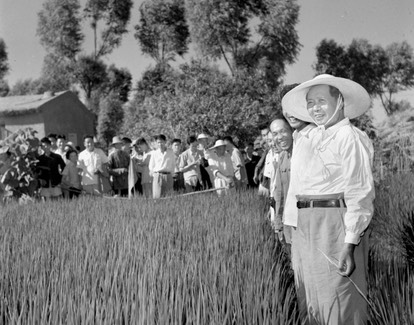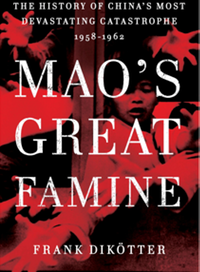1. The famine did not last three years, as is often thought, but at least four years, starting in early 1958 and ending by late 1962.
2. The book uses a wealth of archival evidence to capture how and why decisions that led to the famine were taken at the top and how these decisions affected the lives of ordinary people on the ground.
3. The book shows how people of all walks of life had to hide, steal, cheat, pilfer, forage, smuggle, trick, manipulate or otherwise outwit the state in order to survive, including resorting to armed rebellion and assaults on granaries or trains.
4. China went on an international shopping spree in 1958. As the bills were coming in, Zhou Enlai, with the support of his colleagues and the backing of the Chairman, relentlessly pressed the countryside into fulfilling ever greater procurements in order to meet foreign commitments.
5. The idea that the state mistakenly took too much grain from the countryside because it assumed that the harvest was much larger than it was is largely a myth – at most partially true for the autumn of 1958 only. In most cases the party knew very well that it was starving its own people to death. At a secret meeting in the Jinjiang Hotel in Shanghai dated 25 March 1959, Mao specifically ordered the party to procure up to one third of all the grain, much more than had ever been the case. At the meeting he announced that 'When there is not enough to eat people starve to death. It is better to let half of the people die so that the other half can eat their fill.'
6. The book is the first to use a whole range of archives to come up with an estimate of at least 45 million premature deaths, instead of the usual estimate of 30 to 32 million based on official population statistics.
7. By a very rough approximation, between 6 and 8 per cent of these victims, or 2 to 3 million people, were buried alive, tortured or beaten to death.
8. Many of the victims did not die because there was no grain available in the villages, instead they were deliberately and selectively deprived of food by local cadres because they were relatively rich, dragged their feet, spoke out, or simply were not liked, for whatever reason, by whoever wielded the canteen ladle.
9. Many people vanished because they were too old, weak or sick to work and hence unable to earn their keep; they were considered to be expendable by the state.
10. Not only Mao, but also other senior leaders were willing to condone the deaths of millions of people in the Great Leap Forward. In 1962, having lost about ten million people in Sichuan, provincial leader Li Jingquan compared the Great Leap Forward to the Long March in which only one in ten had made it to the end: 'We are not weak, we are stronger, we have kept the backbone'.
11. In the midst of famine China sharply increased the amount of free economic aid and interest-free or low-interest loans to other countries. China also shipped grain for free to allied countries.
12. Up to 30 or 40 per cent of all housing was turned into rubble, as homes were pulled down to make fertiliser, to build canteens, to relocate villagers, to straighten roads, to make place for a better future beckoning ahead or simply to punish their occupants.
13. A prolonged and intense attack on nature claimed up to 50 per cent of all trees in some provinces, while dams and canals, built by hundreds of millions of farmers at great human and economic cost, were for the greatest part rendered useless or even dangerous, resulting in land slides, river silting, soil salinisation and devastating inundations.
14. Detailed studies conducted at the time show that deforestation, soil erosion, water loss as well as grandiose irrigation schemes severely disturbed the ecological balance, worsening the impact of inundations and droughts described by the leadership as 'natural catastrophes'.

